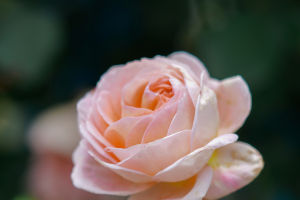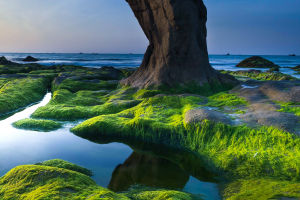Eating mushrooms that make people hallucinate and produce "extraordinary" experiences is collectively called hallucinogenic mushrooms, and there are about 200 kinds of mushrooms in the world.
The most representative class of hallucinogenic mushrooms is the fungus of the genus Amanita, and one of the most famous is Amanita muscaria. Its appearance is estimated to be very familiar to many people. It has a bright red to orange or yellow cap with many white bumps on it.
We often see it in fairy tales, animated movies, and Mario games.
There is also a very large family, dominated by mushrooms of the Pleurotus genus, and Psilocybe genus. The main hallucinogenic ingredient is psilocybin, also known as psilocybin, which is a neurotoxin with neuropsychiatric effects.
Psilocybin poisoning is caused by stimulating the autonomic nervous system and inhibiting the motor nervous system, which will cause nervous excitement, and an illusion of time and space, until symptoms such as self-distortion, delusion, and split thinking appear.
Poisonous mushrooms in some wild mushrooms are similar in appearance to edible mushrooms. Identification requires professional knowledge and certain equipment. It is difficult to distinguish only by the naked eye and based on appearance characteristics such as shape, smell, and color. It is very easy to accidentally eat and cause poisoning.
In addition, because it is in the wild, non-toxic mushrooms are often mixed with poisonous mushrooms, and non-toxic mushrooms are easily contaminated by the hyphae of poisonous mushrooms. Even some non-toxic mushroom species that grow on poisonous plants may be contaminated with toxicity. So even if you eat non-toxic varieties of mushrooms, there is still a risk of poisoning.
Poisonous mushrooms are very toxic, and the clinical manifestations of poisoning are complex and diverse.
The symptoms of poisoning can be divided into 6 types: gastrointestinal type, neuropsychiatric type, hemolytic type, liver damage type, respiratory and circulatory failure type, and photoallergic dermatitis type.
Most of them will experience nausea, vomiting, abdominal pain, diarrhea, and other gastrointestinal symptoms after accidental ingestion, as well as mental symptoms such as hyperactivity, mental depression, confusion, and hallucinations.
In severe cases, severe symptoms such as hemolysis, and liver and kidney damage may occur. At present, there is no specific treatment for poisonous mushroom poisoning, and the symptoms of poisoning are severe, the onset is acute, and the mortality rate is high.
Experts suggest that as it is not easy to identify toxins, during outings, everyone should try to avoid picking wild mushrooms. At the same time, everyone should also be careful not to buy mushrooms from roadside vendors.
Even if you buy wild mushrooms in regular markets, you should not relax your vigilance, especially wild mushrooms that you have never eaten or do not know. Do not buy them lightly.
In order to avoid poisoning, the key to the family diet is not to eat wild mushrooms at will. Group dinners, catering services, folk tourism, etc. Ttry not to process and eat wild mushrooms to ensure the safety of food consumption.


